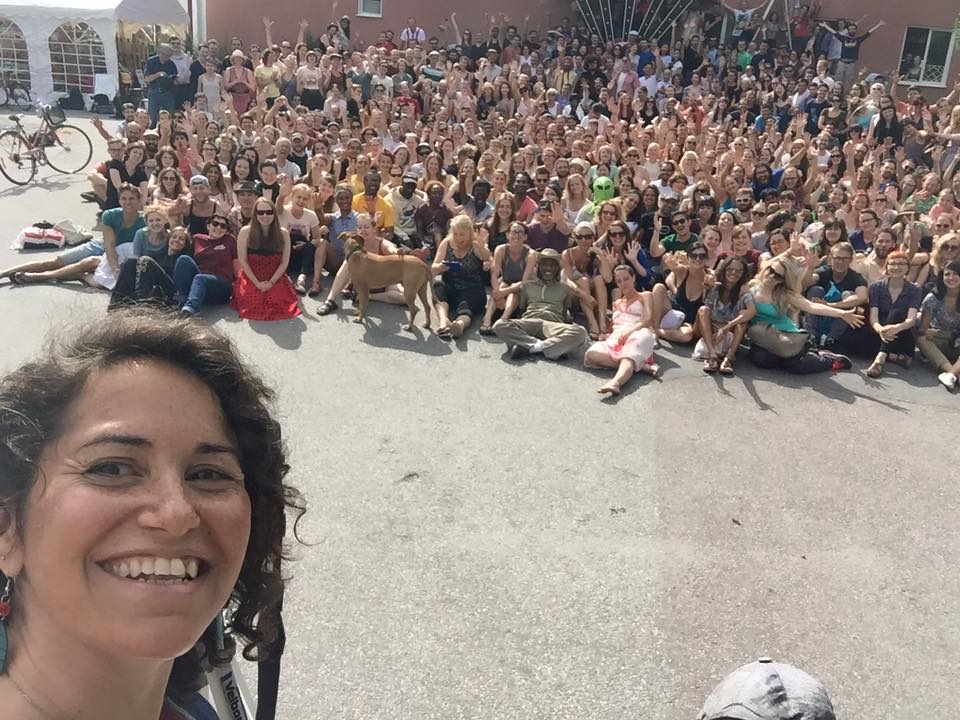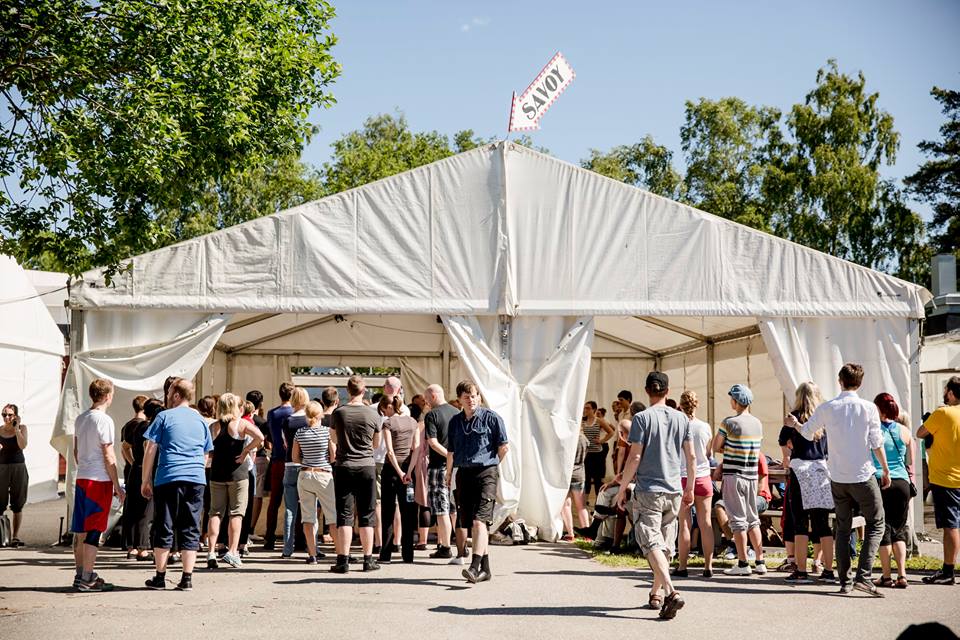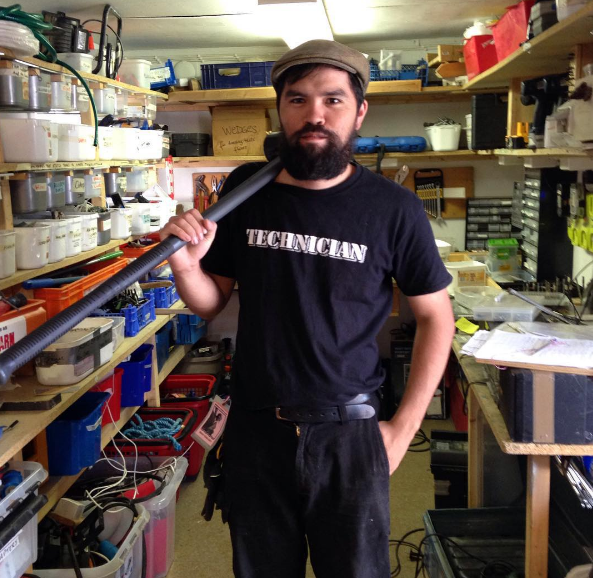I’m just back from two weeks at the Herräng Dance Camp in Sweden.
Just in case you didn’t know, the Herräng dance camp runs for 5 weeks in a little town in Sweden called Herräng. Herräng focuses
on the American vernacular swing dance tradition.
That means all the dancing and music in the program (and around camp for the most part) is jazz. African American Jazz. This definition stretches a little for dances like balboa, but African dances, hip hop, various latin dances, and other fun stuff squeeze in as well. So this really is a camp devoted to dance and music of the African diaspora, with emphasis on the jazz and swing eras.

When we say ‘camp’, we’re not talking a school camp where you sleep in dorms or cabins, or a tents-and-firepit camp. We’re talking about a whole range of accommodation (from private houses to dorms, tents, shared rooms, and caravans).

The camp itself is huge, spreading across the town’s folkets hus, dansbana, school, sporting ground, marina, shop, private homes and roads, local forest, and camp grounds. Dancers are fed in a bar, ice cream parlour, and cafe (all run and produced by the camp), and a number of other local food outlets. The classes are taught on the two dance floors, and then in a series of huge marques.


Herräng employs around 150 staff each week, and sees between 700 and >1000 campers per week. But you never really ever spend time with 1000 people at once, as there simply isn’t anywhere big enough in camp to hold us all. My usual Herräng experience is with a handful, a classful, or a dancefloor full of people.
There are 7 departments within the administration, and the camp board includes three famous dancers (Frida Segardahl, Lennart Westerlund, and Daniel Heedman).

Herräng hires 77 top shelf dance teachers, about 10 formal bands (and zillions of jam session groups), around 26 staff DJs (about 5 or 6 working 7 days per week on 3 dance floors 10pm-10am), and ~24 guest/volunteer DJs each year.

There are full time carpenters, laundry staff, doctors, chefs, cleaners, IT workers, staff managers, bike shop staff, retail, and retail staff. It really is a little town that’s alive for about 8 weeks of the year.




There is a program of dance classes over a 7 day period, and all night social dancing over 3 dance floors with DJs and live music. The entertainment program also includes educational library talks and panel discussions, film screenings, cultural activities on the Wednesday morning and afternoon, and free evening classes in all sorts of things.


It is truly a prodigious event, the largest in the world, and one with the most consistent reputation for presenting high quality music and dance in the historic jazz and swing tradition. It’s also know for being somewhat hedonistic and a little chaotic.
It has much in common with a european summer camp, but no doubt owes much of its longevity (and development) to the role of shared common spaces in socialist democratic Sweden. The Herräng camp perhaps would not ever have begun without the town’s folklets hus and dansbana. It has also always prioritised the involvement of old time dancers from the 20s-50s. This connection with history, as well as the 24-hour program of ‘semi-surrealistic’ events have secured it respect in the modern lindy hopping world.
I like it because it’s mad fun. I can work super hard on dancing, or I can sit about in the sun making friends and talking shit. I can stay up all night social dancing, or I can live a sensible diurnal lifestyle. The music is fantastic, I get to see a truly diverse range of the very best lindy hop, jazz, tap, etc dancing, and I get to spend time with people from all over the world. It’s the combination of diversity and quality that brings me back. I enjoy not knowing what will happen each day. I love it that I can be rowing into a misty lake in the middle of the night to look at a friend’s bunkbed accommodation on a floating pontoon in the middle of the water. Or dancing with a 10 year old to Count Basie at 2pm at a tea party. Or learning the Russian word for hello at a communal dinner table.
BUT
not everyone loves Herräng. If you’re the sort of person who prefers a hotel style event, where you are told what to do, where to go, and how to do it for every minute of the day, you’ll find Herräng’s more casual approach maddening. I have noticed that Americans and Australians who prefer a more rigidly hierarchical event with clear bosses and ‘cool people’ struggle with the more complex power dynamics of Herräng. Shit regularly goes wrong in Herräng, from you getting lost at 1am looking for your bed, to teachers not turning up for classes. There’s a chance you’ll pick up a heavy cold, or hate the food. And the dry humour of the daily evening meeting might not work if you have a more (excuse me for this) ‘American’ sense of humour.

As an example, this sort of sign outside the main eating area would drive you mad if you wanted to know exactly what was on the menu. But I enjoy it.
It can also be a struggle if you’re used to traveling in a pack of your friends from home. Herräng invites you to meet new people, and make new friends. Shared dinner tables and communal living are clear markers of that socialist-democracy I mentioned. And if you’re into individualism and strict rules about what belongs to whom, you’ll get shitty when you see your dress end up in lost property, then turn up on stage in an evening meeting performance. Herräng definitely has rules, a hierarchy, and very clear power structure. It’s just not as clear as at an Australian or American event. And I like that. I like that it’s assumed I’ll find my own bed, make my own friends, and enjoy sharing a table. I really enjoy meeting lots of people, and I quite like the mad, unexpected things that happen.

I really loved reading this post, & your follow-up about being a DJ at Herrang! Thanks for all the loving (& v. interesting!) detail — it seems to give a good feel for things, which I appreciate as a starry-eyed newbie. I went to a more organic, spontaneous activist festival last weekend & I thought the gentle chaos might bug me, but I really liked it (especially because you did just spend hours talking to new friends on the grass), so I think I can understand the appeal. :)
I‘m asking me about dogs? Ever seen in Herräng?
Occasionally. But I wouldn’t take mine.